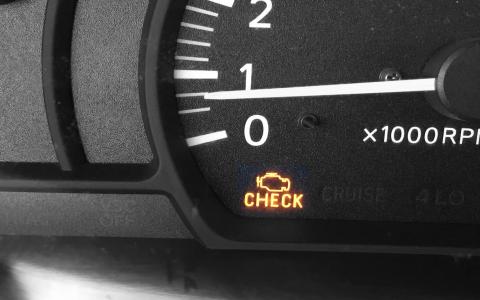Seventh generation
Production1980–1986
AssemblyCuautitlan, Mexico
Dearborn, Michigan, USA
Kansas City, Missouri, USA
Norfolk, Virginia, USA
St. Paul, Minnesota, USA
General Pacheco, Argentina
Louisville, Kentucky, USA
Wayne, Michigan, USA
Oakville, Ontario, Canada
San Jose, California, USA
PredecessorFord F-Series sixth generation (1973-1979)
SuccessorFord F-Series eighth generation (1987-1991)
Body style2-door pickup
4-door pickup
Engine300 CID (4.9 L) I6
255 CID (4.2 L) Windsor V8
302 CID (5.0 L) Windsor V8
351 CID (5.8 L) Windsor V8
400 CID (6.6 L) 335 V8
460 CID (7.5 L) 385 V8
6.9 L (420 CID) Diesel V8
RelatedFord Bronco
Ford B-Series
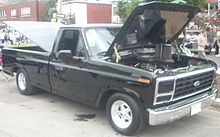
![]()
1981 Ford F-150 (aftermarket modifications)

![]()
1982–1983 Ford F-100 utility
The next major redesign for the F-Series came for the 1980 model year. The new truck had a squarer look, with sharp lines and flat panels; the trucks were designed with improved fuel efficiency in mind, and to this end, Ford added its new AOD automatic overdrive (four-speed) transmission as an option on light-duty models. The trucks were available either a regular cab, extended cab or crew cab. For the first time, medium-duty F-Series trucks bore no resemblance to the light-duty counterparts whatsoever. They had lower wedge-shaped fenders with a single rectangular headlight in each fender, and a hexagon-shaped hood and horizontal split-grille with the word "FORD" spelled out in the middle. The upscale Ranger trim line was dropped from the F-Series in 1982; Ranger was subsequently applied to the replacement for the Ford Courier compact-pickup line. Trim options became XL, XLS, and XLT Lariat. In 1982, a slightly re-designed grille appeared, featuring fewer vertical bars than the previous 1980–1981 grille; for the first time, the corporate Blue Oval logo made its appearance on the grille. This generation of Ford trucks are the latest to become popular restoration projects as most of these trucks are becoming emissions exempt in most states and now old enough to be registered as classics or antiques.
The F-100 was dropped as the base model at the end of 1983 and the now-familiar F-150 took its place as the base model F-Series truck for 1984. This generation also saw extensive use of galvanized body panels to fight corrosion which is now gaining them popularity among restorers. In Mexico, there is an "F-200" which was introduced in 1976. This variant remained until 1991.
The various changes that occurred between the 1981 and 1982 model years were accompanied by a slight cosmetic change- 1980–81 trucks have a plain grille with "FORD" spelled across the front of the hood in chrome lettering, similar to the previous generation. 1982–86 models had the letters removed, and a Ford oval placed in the center of the grille. This made the 1982 the first model year to feature a blue oval on the front, something that has been on every model that followed it, with the exception of the 2010 and 2011 F-150 SVT Raptor.[1] Medium-duty models had the word "FORD" spelled out in between the grille from 1980 to 1983, and was replaced by a blue oval "Ford" logo in 1984. These versions continued into 1993.
This generation saw two different sets of trim levels:
In 1980 and 1981, there was:
- Custom- Mainly Base model with manual locks/windows, vinyl seat, and black rubber floor mat,but could be had with other options.
- Ranger- Intermediate trim that added a color-keyed floor mat, chrome trim on the door panels,and woodtone dash trim.
- Ranger XLT- A step up from the Ranger that added better seat trim, a color-keyed headliner, color-keyed carpeting, aluminum tailgate trim and optional power windows/locks.
- Ranger Lariat- a step above the XLT that added a plusher interior,and Woodgrain Trim on the door panels.It also featured special "Lariat" emblems on the cab,as well as Ranger Lariat script above the radio.
- Explorer- a limited edition options and trim group with year specific stripes unique to the Explorer. Was combined with one of the other trim levels.[2]
For 1982–1986:
- Base – basically the same as the Custom of the previous years.
- XL – replaced the intermediate Ranger trim for 1982 as the Ranger name would be used for Ford's new compact truck.
- XLS- a new trim level that featured a blacked-out grille, bumpers, headlight bezels, and windshield trim. It also featured a stripe graphics package and black and silver dash trim. Available exterior colors were red, silver, and black.
- XLT Lariat- featured floor carpeting, color-keyed headliner, a standard chrome grille, and optional power windows/door locks. 1984 saw the last year for woodgrain trim on the door panels as 1985–1986 models had a carpeted section applied to the door panels. In 1985 the tailgate trim was changed to a "flat" full width aluminum with a red "reflector" towards the bottom with chrome FORD letters.
- Explorer a limited edition options and trim group with optional year specific stripes unique to the Explorer– The Explorer trim line (1968–1986) was dropped for the 1987 models to introduce the Ford Explorer SUV in 1991. Explorer packages changed every year,and were only offered for a limited time each model year.
- Eddie Bauer-introduced for 1985, an outdoors-themed interior trim package with two-tone exterior paint. Originally also offered with the Bronco, the Eddie Bauer trim would spread to a number of other Ford light trucks.
Contents
- 1 Powertrain
- 2 Axles and differentials
- 3 Medium-Duty F-Series
- 4 References
Powertrain
The big-block 460 CID V8 was dropped for 1980, but returned in 1983. In 1982, the 335-series "Cleveland" V8s were discontinued. The 351M was replaced by the 351 Windsor (an older design that now made its debut in light trucks), while the 400 vanished altogether (Ford's competitors had ceased selling engines in that size range a few years before). The 5.0 L V8 switched over to fuel injection, first as an option in 1985 and then as standard in 1986.
The new Essex V6 was added in 1982, but didn't sell particularly well. It was dropped after 1983, and the long-lived 300 inline six continued as the standard engine through the series. Trucks equipped with the 3-speed manual transmission were the last American vehicles to have a column-shifted manual transmission.[citation needed]
New to the F-series truck for the 1983 model year was the 6.9 L V8 International Harvester IDI option. Although GM had been offering a diesel engine option in pickups since 1978, the International 6.9l was the first diesel engine in a light-duty pickup that was able to put out the power of comparable big block gas engines. Available in the f250 and f350 pickups, the diesel engine option has remain a strong seller up until the present day.
Engines:
EngineYearsPowerTorqueNotes
232 CID Essex V61982–83110 hp (82 kW)183 lb·ft (248 N·m)
255 CID Windsor V81980–81115 hp (86 kW)206 lb·ft (279 N·m)2bbl
300 CID Straight-61980117 hp (87 kW)227 lb·ft (308 N·m)1bbl
300 CID† Straight-61980120 hp (89 kW)229 lb·ft (310 N·m)1bbl
300 CID Straight-61981–86122 hp (91 kW)255 lb·ft (346 N·m)1bbl
302 CID Windsor V81980–85133 hp (99 kW)233 lb·ft (316 N·m)2bbl
302 CID Windsor V81985–86185 hp (138 kW)270 lb·ft (366 N·m)EFI
351 CID 351M V81980–82136 hp (101 kW)262 lb·ft (355 N·m)2bbl
351 CID Windsor V81980–82136 hp (101 kW)262 lb·ft (355 N·m)2bbl
351 CID Windsor V81983–85150 hp (110 kW)280 lb·ft (380 N·m)2bbl
351 CID HO Windsor V81984–86210 hp (160 kW)305 lb·ft (414 N·m)4bbl
400 CID† 400 V81980–82136 hp (101 kW)310 lb·ft (420 N·m)2bbl
420 CID International Harvester IDI diesel V8†1983–87170 hp (130 kW)315 lb·ft (427 N·m)IDI
460 CID† 385 V81983–84225 hp (168 kW)380 lb·ft (515 N·m)4bbl
460 CID†† 385 V81985–86245 hp (183 kW)385 lb·ft (522 N·m)4bbl
† Only available F-250 HD and F-350
†† 1984–85 only available on HD F-250 and F-350 models, 1986 available all models
Axles and differentials
This generation was the first time Ford used Independent suspension on their full size 4x4 trucks. As well as being the first time any of the Big Three (automobile manufacturers) made a 4x4 full size truck without a solid front axle. Ford & Dana Corporation called this the Twin Traction Beam or TTB. The F-150 used a Dana 44 TTB. The rear was a Ford 8.8in. axle with the Ford 9in. axle being phased in, in 1983. The F-250 used a 8 lug version of the Dana 44 TTB called the Dana 44 TTBHD with the Dana 50 TTB being a option. The rear was a Dana 60 until 1985 when Ford phased out the axle for their own Sterling 10.25. The F-350 used the Dana 50 TTB in front until a mid-year change in 1985, when the F-350 was fitted with the Dana 60 solid front axle. For the rear axle the F-350 trucks used a Dana 60 for the single rear wheel trucks and a Dana 70 for the dual rear wheel trucks until 1985 when Ford once again phased in their own Sterling axle.
Medium-Duty F-Series
For the first time since 1967, the medium-duty version of the F-Series (F-600 and above) were redesigned. Although they still shared a common cab with the pickup truck line, the medium-duty line now wore separate bodywork ahead of the firewall. The larger trucks were easily distinguished from their separate fenders, much like the larger L-Series. Along with gasoline engines, diesel engines were available. In 1982, the Ford Blue Oval replaced "F-O-R-D" in the center of the grille.


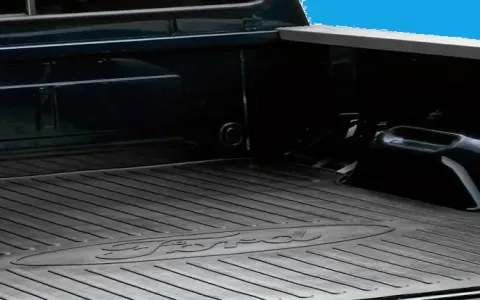
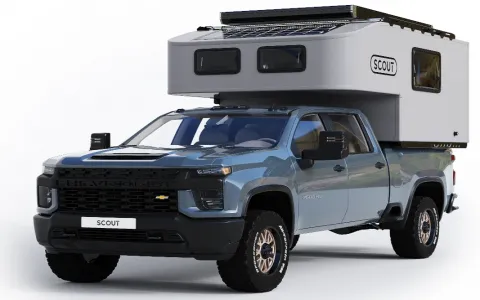
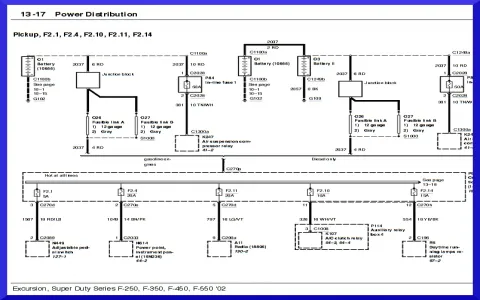


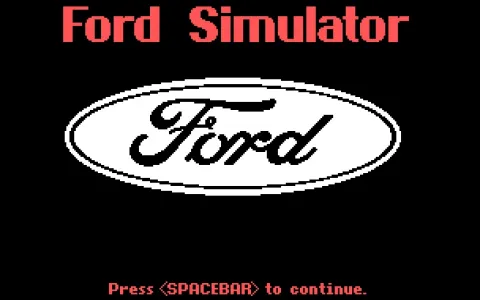

![What Ford F150 is Best for Towing ? [Full Guide]](/sites/default/files/styles/frontpage_stories/public/2025-04/f250-camping.webp?itok=6Ah370zB)
